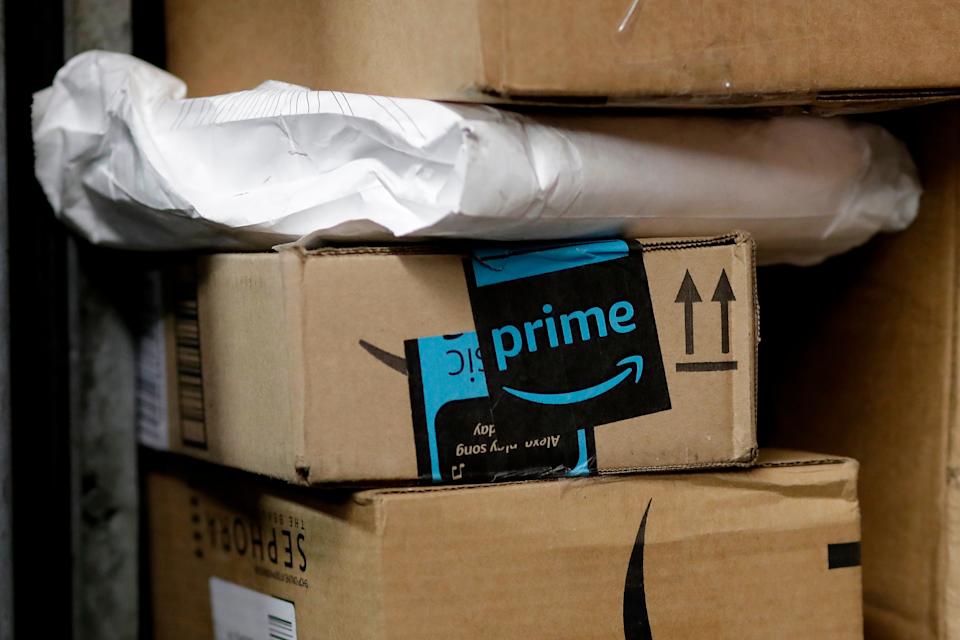Why Amazon's huge investment in one-day shipping is money well-spent

Amazon Prime’s move from two-day to one-day shipping this year is a prudent one, even if it comes at a significant cost for the Seattle tech giant, say analysts.
Amazon (AMZN) surprised Wall Street analysts during its fiscal first-quarter 2019 earnings call by announcing it would invest at least $800 million during the company’s second quarter to make one-day shipping standard for Amazon Prime customers. Two analysts tell Yahoo Finance that Amazon’s huge investment in faster shipping is money well-spent, contending the move will help attract and retain shoppers, even if it’s unclear how much Amazon will ultimately spend.
“It's kind of jaw-dropping to even think about the prospect that they're going to take something that was already remarkable [Amazon Prime] and turn it into something even more remarkable,” acknowledged Piper Jaffray analyst Michael J. Olson, who declined to estimate how much one-day shipping might ultimately cost Amazon or how much in incremental revenue it could eventually bring the company. “While they’ll spend $800 million on building it out in the June quarter, with additional spend coming later in the year, we don't have a good sense for what that additional spend looks like. But I think Amazon’s one-day shipping initiative only increases the company's escape velocity versus other competitors in the space.”
Since Amazon launched it in 2005, Amazon Prime has changed the way shoppers experience online retail by standardizing two-day fast shipping. And as shoppers’ expectations for fast delivery have evolved, so has Prime itself. Over the years, Amazon has added a number of media services for Prime users to consume, including video and music streaming. Indeed, Prime has become so successful, it now has over 100 million subscribers in the U.S., according to a report published by Consumer Intelligence Research Partners this January. That’s up from roughly 91 million Amazon Prime subscribers in the U.S. at the end of December 2017, according to the same report.
Don’t underestimate fast shipping
“It can’t be underestimated just how much speed is a driver in e-commerce, and obviously, that’s always been Amazon’s advantage with free two-day shipping,” explains eMarketer analyst Andrew Lipsman. “What's interesting is that, in the last couple of years, other major retailers have started to narrow the gap.”
Indeed, over the last five years alone, Walmart (WMT) and Target (TGT) have significantly ramped up the ways customers receive their orders. Walmart, which saw e-commerce sales grow 43% year-over-year during its more recent quarter, now offers in-store pick-up for online orders at more than 2,100 out of its 4,300 locations, as well as online grocery delivery from more than 800 stores.
Target, which saw its own e-commerce sales increase 28% year-over-year during its fourth quarter, processed 60% more items during the holiday months of November and December last year compared with the year prior, through options like the ability to ship from store, online order pickup and “Drive Up,” which lets shoppers drive to designated delivery pick-up spots at a physical Target location to get their orders.
While Amazon shares rose over 2% following the company’s news, Walmart stock dipped 2% and Target stock was down 5.6% as of Friday when the markets closed.
Not all analysts are smitten with Amazon’s standardizing one-day shipping, however. Forrester analyst Sucharita Mulpuru called Amazon’s announcement a veritable “marketing pitch,” given the company already provides one-day delivery for select items.
“Just because they say one day is the new standard doesn’t mean everything is one day [shipping],” explained Mulpuru. “Even with two day [shipping] now, you will often get things arriving later — either because Amazon explicitly told you upfront it would arrive later or that it just wasn’t on time because the carrier was delayed.”
Still, Amazon’s push to make faster shipping standard once again will likely set the pace for the rest of e-commerce, which is still trying to keep up with the competitive Seattle tech giant.
More from JP:
